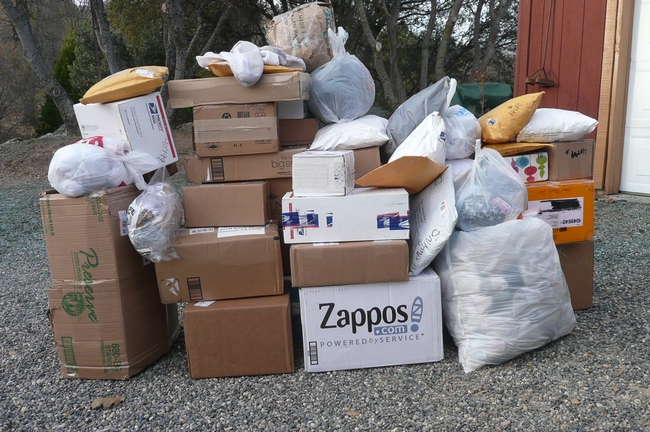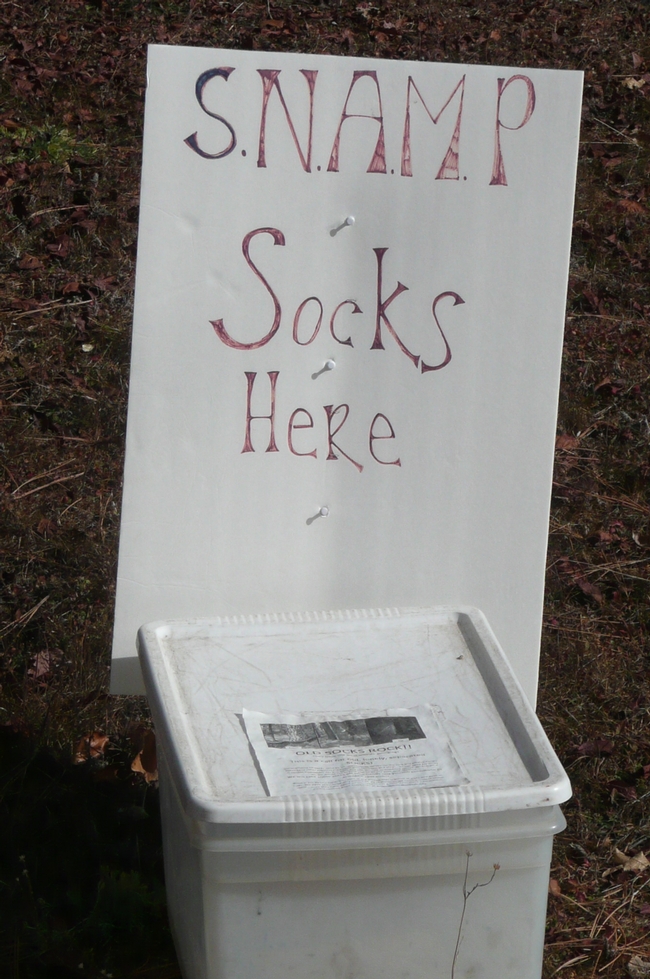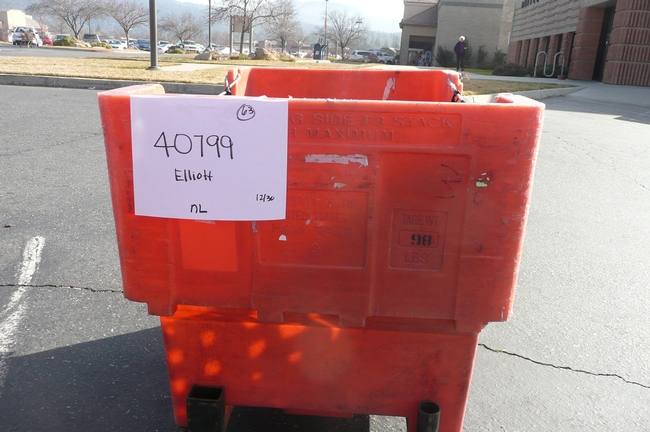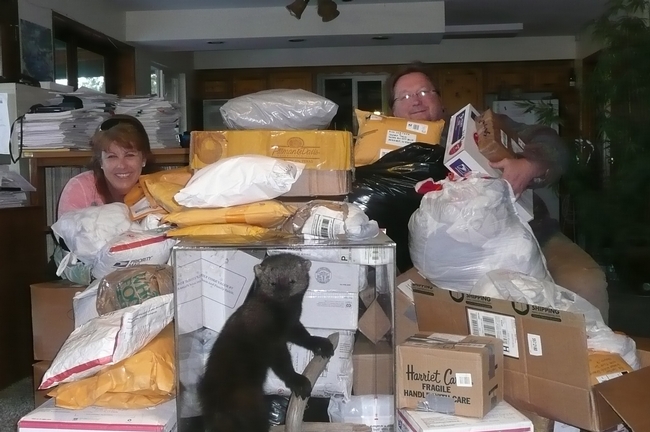You socked it to us!
Thank you 185 times over!! The wildlife research team from the Sierra Nevada Adaptive Management Project recently put out a request for the donation of single socks. They use them to hold bait for their camera trap studies of the Pacific fisher. The response was overwhelming and the fisher research team would like to thank all of the people who sorted, dropped off or packaged, waited in line and mailed their recycled socks to them. Your commitment and follow through are remarkable!
The team first got bags of socks from the local high school, and then grocery bags of socks started appearing in a local drop off bin. Soon boxes of socks started arriving by mail. They came from all over California and as far away as Oregon, Nevada, Minnesota, Arkansas and Maryland. The boxes just keep coming: 12 one day, 16 the next, 185 at last count!
During one visit to the post office at Christmas time, we had to roll the bin to the car. Other customers standing in line were trying to hide their envy of our good Christmas fortune!
The team has been purchasing socks for years to hang meat in trees to attract the elusive Pacific fisher, a nocturnal weasel, to motion-detecting cameras. Researchers have had to spend valuable time and money acquiring the socks, but never again!
The wildlife piece of this SNAMP forest study continues, along with our other scientific teams, to look at the effects of the U.S. Forest Service’s thinning projects in the Sierra. These projects are done in our national forests for fire protection and forest health. Our scientific research teams from the University of California are here to look at changes these thinning projects bring to the forest, its water cycle and its wildlife. This collaborative effort is part of state and federal efforts to refine management practices for our beautiful and complex forested ecosystems.
 We have collected years of baseline data and welcome the forest thinning work that has begun this summer in both the southern site near Oakhurst and the northern site near Forest Hill. We will continue to follow the movements of the fisher over the next few years to learn more about their responses to the forest management efforts.
We have collected years of baseline data and welcome the forest thinning work that has begun this summer in both the southern site near Oakhurst and the northern site near Forest Hill. We will continue to follow the movements of the fisher over the next few years to learn more about their responses to the forest management efforts.
But in the meantime, six newspaper stories and four radio interviews later, we stand in awe of the power of the media and social networks. So, for the many cards, letters and emails we got sharing the stories behind the socks, from the drawers of loved ones who passed away to Earth Day projects for school kids, our wildlife crew is buoyed by your thoughts and support! Our faith in people’s attention to kind details in life is renewed! Thank you!



